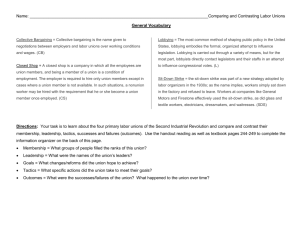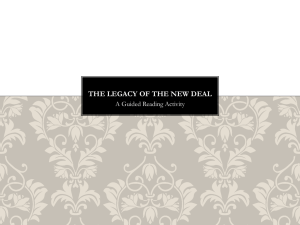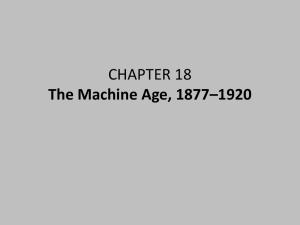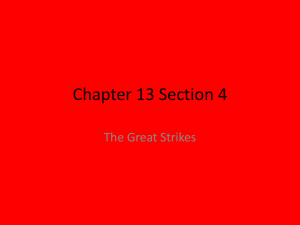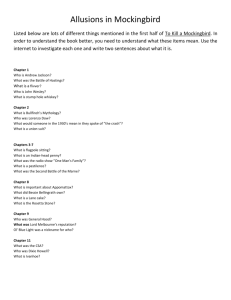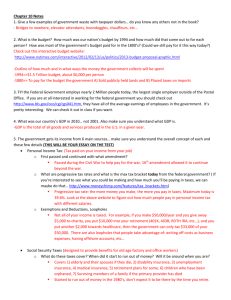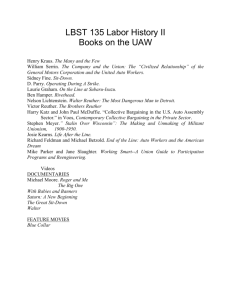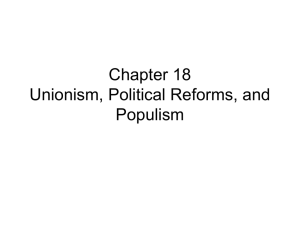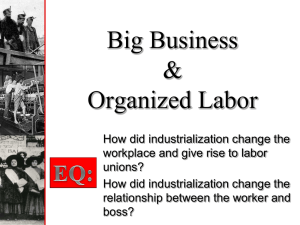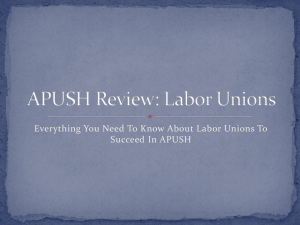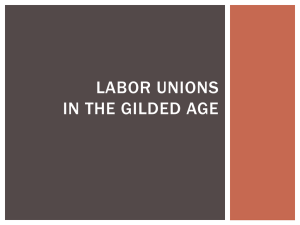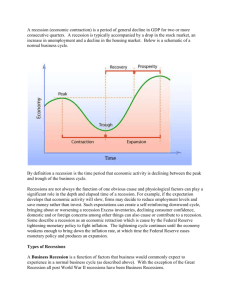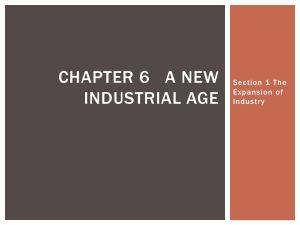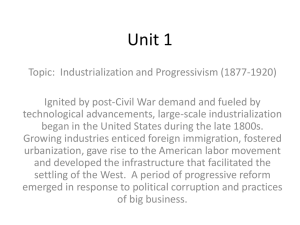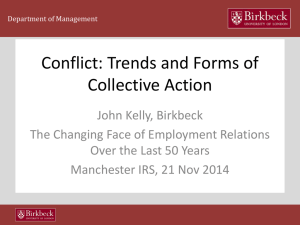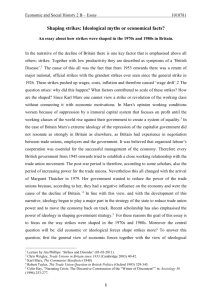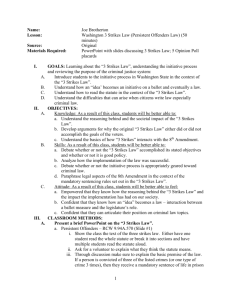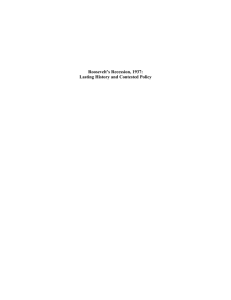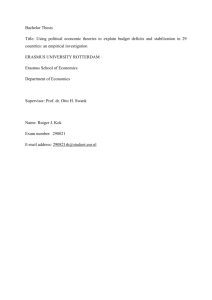Chapter 23 Section 3
advertisement
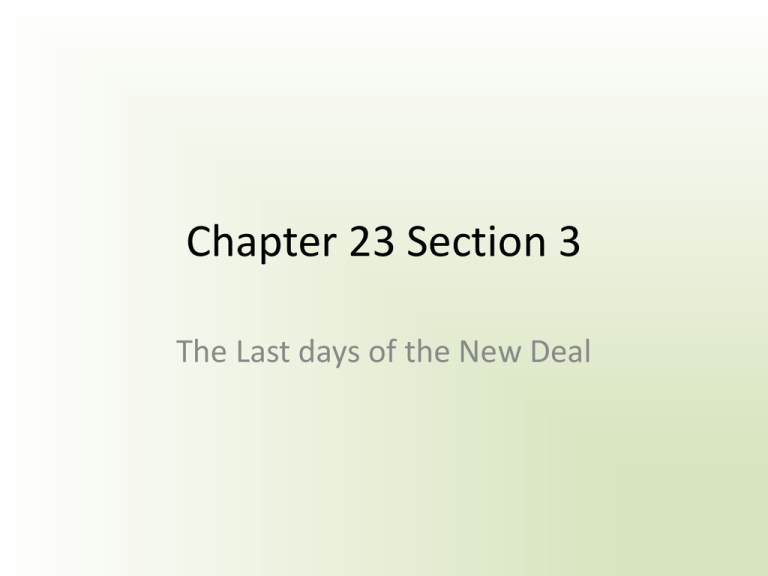
Chapter 23 Section 3 The Last days of the New Deal Recession • A period of slow business activity • The U.S. entered a recession in 1937 when the economy collapsed again Why did the U.S. slide back into a recession in 1937? • Social security taxes meant workers had less money to spend and bought fewer goods • Consumers had less money because programs such as the WPA had been reduced in size National Debt • The total amount of money the federal government borrows, and has to pay back • The government has to borrow whenever the amount of money it brings in is less than the amount it spends • The New Deal increased the national debt by $22billion Why did FDR become concerned about the national debt? • New Deal programs had required borrowing massive amounts of money, causing the national debt to rise dramatically Revenue • Income • Due to the New Deal, American spending surpassed its revenue From reading section 3, explain why unemployment rose during 1937? • New Deal jobs programs provided initial relief, but only for certain segments of society. • Critics charged that government spending on jobs programs and public works projects wasted resources, interfered with free market economics, and expanded government bureaucracy Coalition • An alliance of groups with similar goals – The CIO (Congress of Industrial Organizations) was a coalition of la or unions representing unskilled labor – The aim of this coalition was to challenge conditions in industry Sit-down strike • A strike in which laborers stop working but refuse to leave the building. • Supporters outside would set up a picket line What made sit-down strikes effective to some extent? • Together, sit-down strikers and picket line protesters would prevent companies from bringing in replacement workers What gains and setbacks did unions experience during the New Deal Era? • Wagner Act protections and activism by union leaders allowed unions to grow dramatically. • Strikes were used as a tool, sometimes successfully. But sometimes leading to violent opposition • Eventually sit-down strikes were outlawed by the Supreme Court What impact did the Congress of Industrial Organizations (CIO) have on union strategies? • The CIO helped to unite and organize the nation’s unskilled workers in massproduction industries, using the strike as the main tool in the quest for better wages and working conditions Why did the federal government fund new arts programs during the Depression? • FDR believed that the arts were necessities, not luxuries. • Art and theater could create awareness of social problems, while employing many and fostering hope. What did critics dislike about the Social Security System? • The payments were low • Women were discriminated against • It took from the paychecks of some, that had worked for it, in order to give to others
